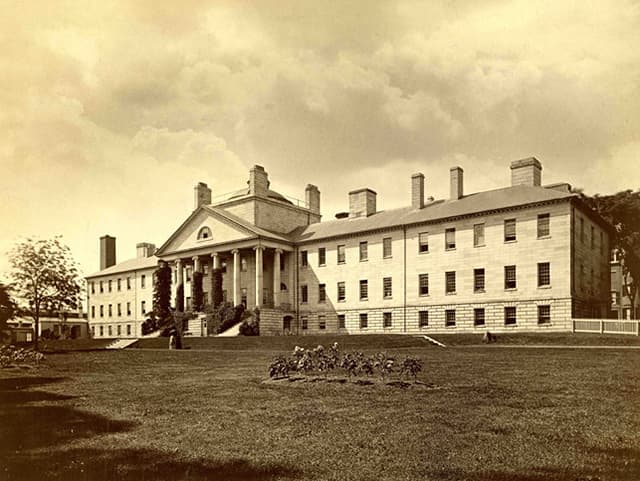A History of Neurosurgery at Massachusetts General Hospital
Contact Neurosurgery
The Department of Neurosurgery at Massachusetts General Hospital provides a complete range of surgical services for the diagnosis, surgical treatment and rehabilitation of neurological disorders of the brain and spine.
Chartered in 1811 and opening its doors in 1821, Mass General is the third-oldest general hospital in the United States. It was also an early crucible of neurosurgical innovation and the site of some of this country’s most significant advances—and pioneers—in the study and practice of neurosurgery.
By the late 1870s, the hospital had assumed a distinctly surgical character, with surgical admissions outnumbering medical admissions since the outbreak of the Civil War. Early trephinations—gaining access to the brain by cutting a hole in the skull—were performed by Dr. John Collins Warren, a hospital founder, first for treatment of acute trauma and later for epilepsy. As late as the 1890s, however, surgical procedures for brain tumors had not yet been introduced or even contemplated. The first electrical stimulation of the cortex was performed in 1890.

Dr. John W. Elliott was first to express interest in establishing brain surgery as a specialty at Mass General. He appears to have performed his first three explorations for tumors in 1895 in the presence of a young Harvard University medical student named Harvey Cushing, widely regarded as the father of modern neurosurgery.
At that time there was no dedicated neurosurgical specialty at the hospital. A total of 63 “brain cases” were divided among 18 operating surgeons between 1895 and 1905—a period that, not surprisingly, produced little progress in diagnostic or operative technique.
In 1911, formal policies were established for interactions between surgeons and neurologists. Samuel J. Mixter, a surgeon who had shown interest in the operative treatment of trigeminal neuralgia, was given a “Special Assignment in the Surgery of the Central Nervous System.”
By 1917, the hospital was performing between 80 and 100 cases annually. Mixter himself performed the first-ever neuroendovascular procedure, an endoscopic third ventriculostomy, in 1923. But due to the nature of the instruments and the high surgical morbidity, the procedure was shelved for nearly 80 years.
In the ensuing years, most of the central nervous system operations performed at Mass General were for trauma, as well as spinal cord tumors.
In 1933 the hospital officially created a neurosurgical service, and Dr. William Jason Mixter was named its first chief. In 1934, Mixter, together with orthopedic surgeon Joseph S. Barr, reported a series of herniated intervertebral discs in the New England Journal of Medicine, inaugurating a new era in spinal surgery.
By the late 1930s, the annual number of nontraumatic surgical admissions had reached 400. Special operating rooms for neurosurgery went into use in 1933. A residency program was established, with its first resident completing his training in 1936. The Neurosurgical Service was created in 1939, inaugurating neurological surgery as an independent specialty and formally ending the practice of assigning brain operations to whichever surgeon wished to try his hand.
In 1941, leadership of the neurosurgical service passed to James C. White, who had a lifelong interest in sympathetic surgery and the management of pain. In 1969 he and William Sweet, who later served as chief of the service, collaborated on a seminal text, Pain and the Neurosurgeon.
In the decades since, the Neurosurgery Service has received several important gifts for the establishment of research. They include funding from The Pappas Foundation for a professorship in neuroscience at Harvard Medical School and a major neuroscience center at the hospital, the Stephen E. and Catherine Pappas Center. The Mixter family has donated the Mixter Laboratories. These gifts gave rise to a major presence in basic and applied science at Mass General.
As its growth continues, the Neurosurgery Service remains committed to the precepts of its founding physicians. Their influence and the success of their vision is manifest in the service’s graduates, more than half of whom obtain academic appointments and, frequently, rise to department heads at Mass General, elsewhere in the country and at major institutions abroad.
Support Neurosurgery
Philanthropic support for the Department of Neurosurgery at Mass General is critical to patient care, research and education.
